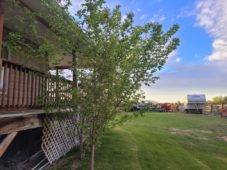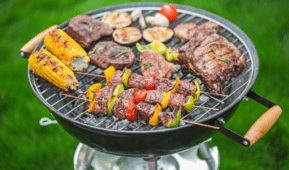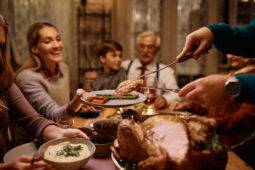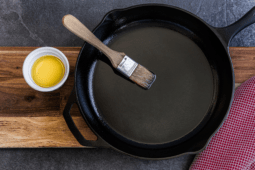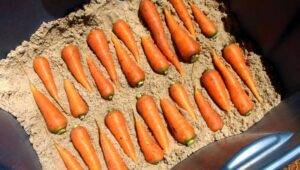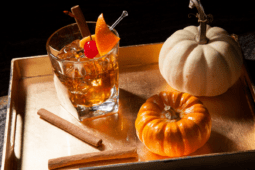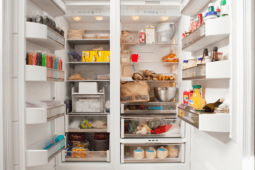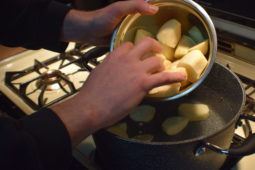For Better Tasting Grilled Foods, Try the Dual Fuel Technique
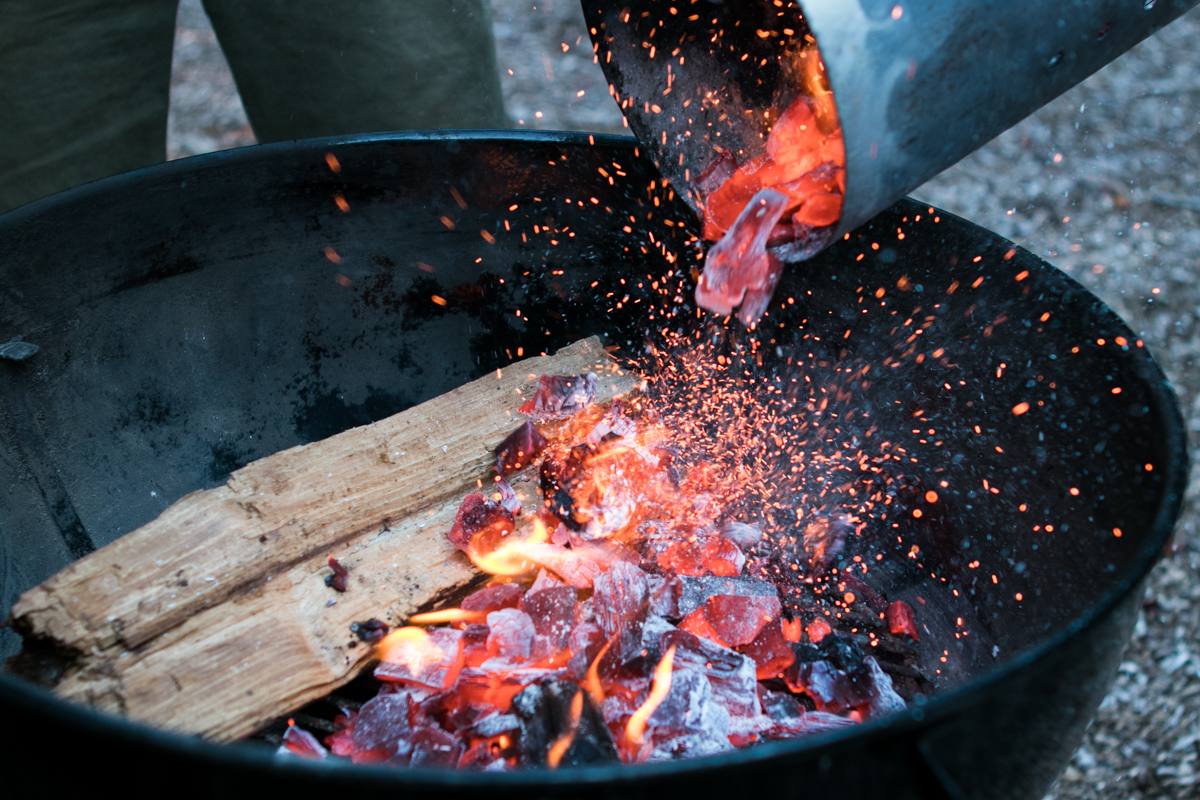
Among the true believers, there's a fair consensus that when it comes to grilling: charcoal simply tastes better than propane. No disrespect to the gas grill; it can turn out great results. But when the true taste of summer is the priority, nothing can beat the smoky, open-flame flavor of food grilled over hardwood coals.
Well, except for food cooked over an actual hardwood fire, with coals freshly made from whole logs that you just ember-ed down yourself. This is easy enough to do in a backyard firepit, or even in the same kettle grill you likely use with your charcoal.
The problem is, of course, that a true wood fire can take hours to break down into the type of glowing coals needed for grilling. This is why we farm out the process to charcoal-producing operations in the first place: those black chunks of carbon are pre-burned without oxygen, thereby allowing you to skip the first 75% of the process, and just get cooking within 20 minutes or so.
So, here's our vote — simply make the best of both worlds with a “dual fuel” technique: combine the consistency of charcoal with the smoky goodness of burning logs, and your food will be that much better in the process. Here's how to do it.

Begin by starting your charcoal in your preferred method. (I like a chimney starter.)

While they're getting toasty, select a hardwood log from your woodpile. This can be anything that's not a softwood like fir, pine, spruce, etc. Some favorite species include: maple, apple, oak, alder, cherry, pecan, and hickory. Make sure it's sized to fit inside your grill.
 Once the charcoal has heated up so that there's an even layer of white-grey ash (about twenty minutes), dump them into one side of the grill.
Once the charcoal has heated up so that there's an even layer of white-grey ash (about twenty minutes), dump them into one side of the grill.
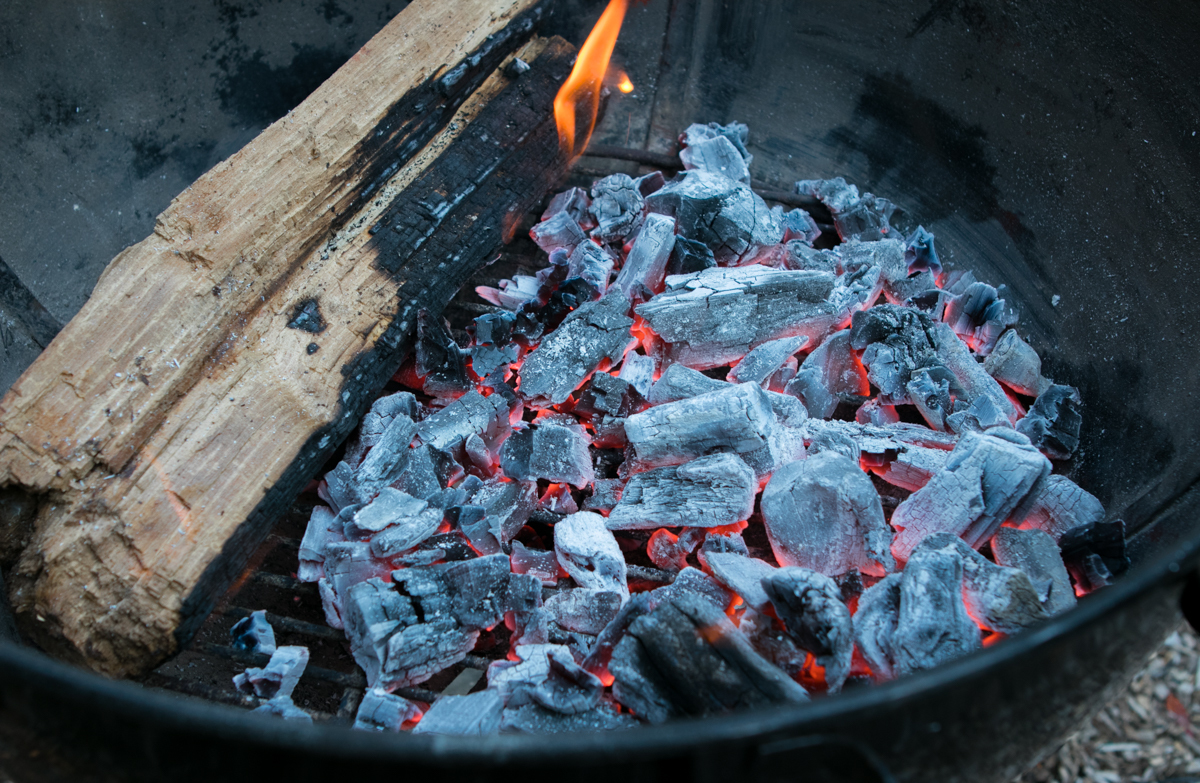
Then place your log about one-third of the way over, piling up the coals as it settles in.
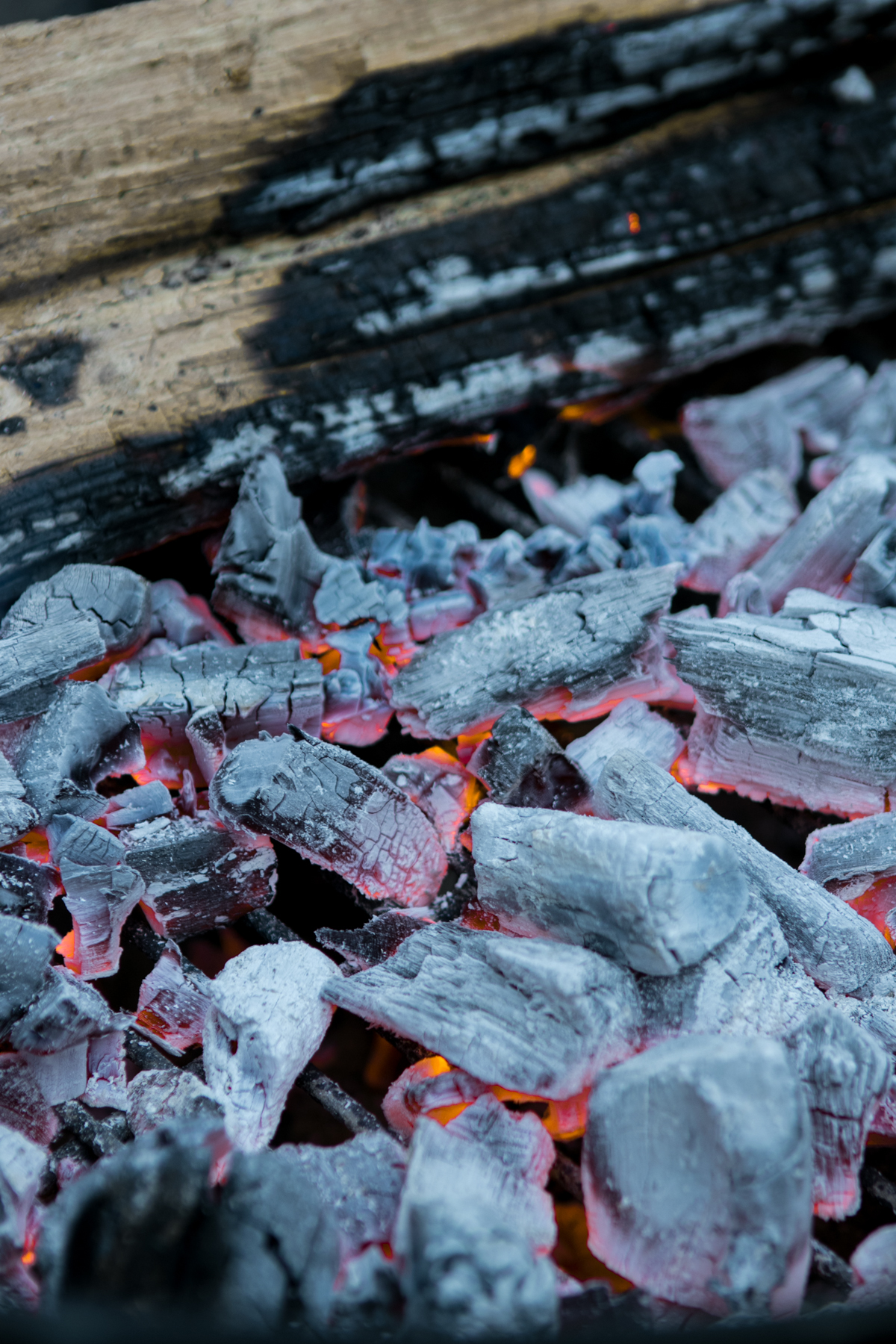
For my money, this creates the ideal set-up for grilling:
-
there's a multi-level fire with the coals banked to one side, the log in the middle, and a cool spot to the other side
-
There's plenty of flavorful smoke coming from the wood
-
The charcoal brings a consistent, predictable level of heat that will last for the duration of the cook
-
There's a secondary source of heat that will continue to burn after the charcoal has died down
Note that the log never really “flames”: it just lies there, tucked into the coals, slowly blackening and becoming toasty and coal-like in its own right over time. If flames do pop up, squelch them…it's bad flavor. Move the food over to one side while they die down.
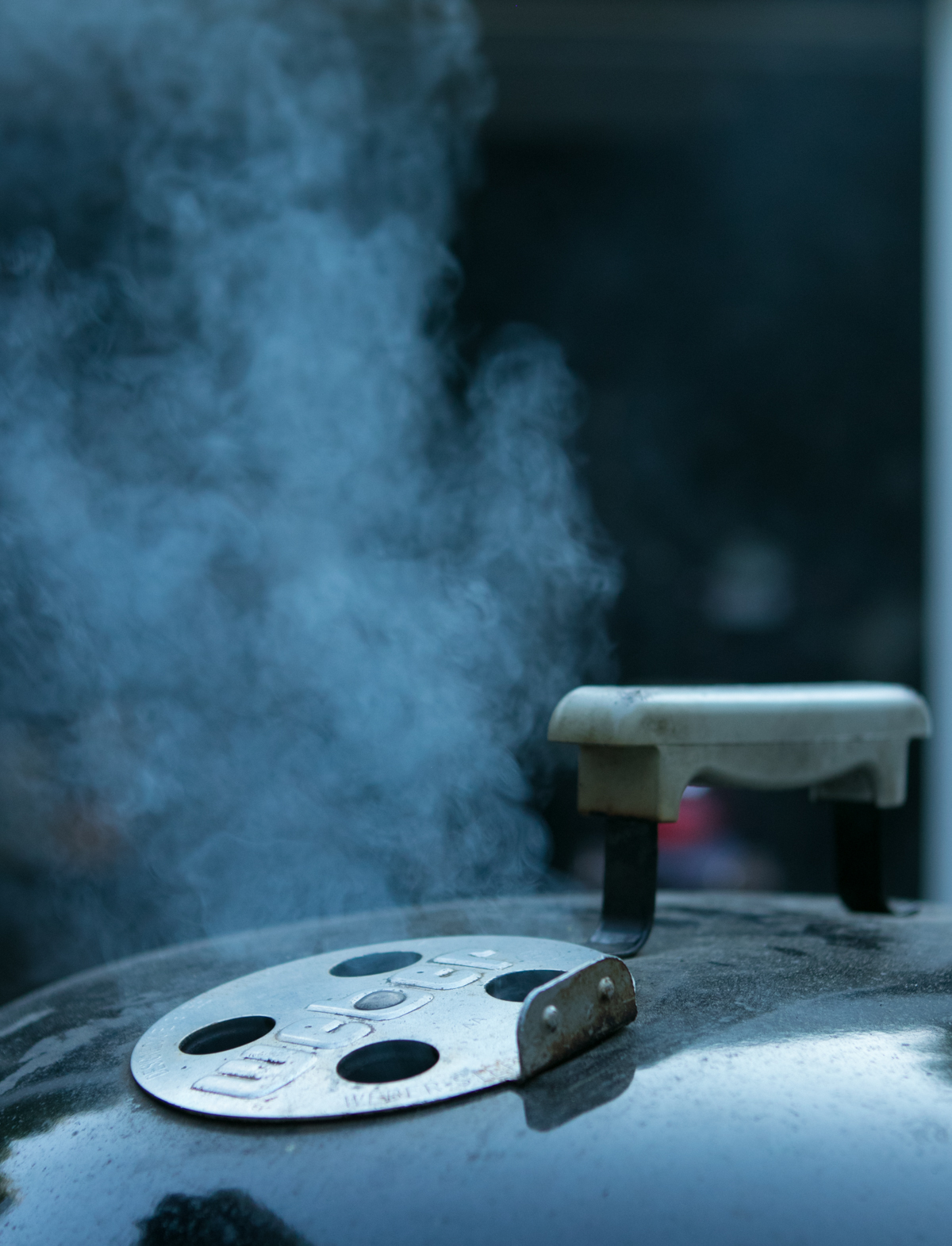
Really…that's it. Solid heat. Legit wood-fired flavor. And that's what summer is all about.

